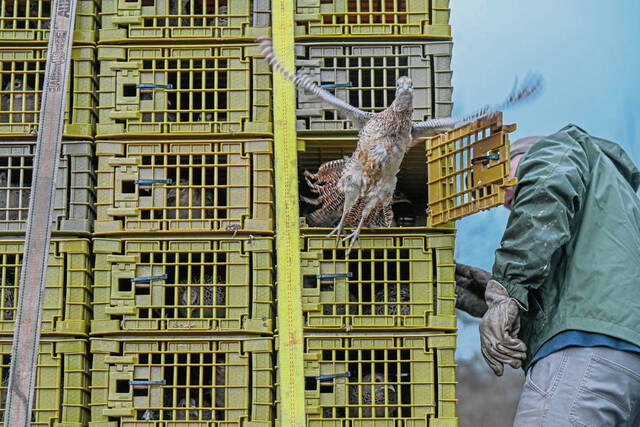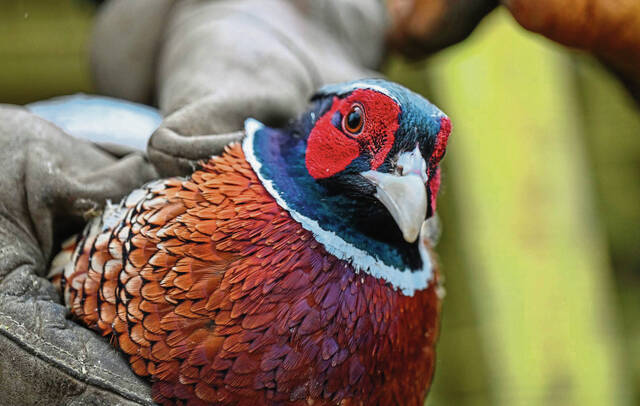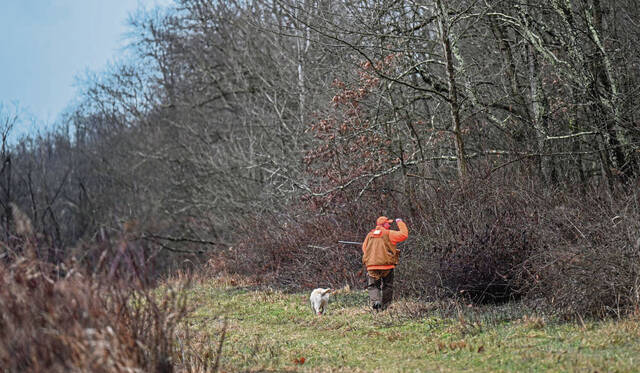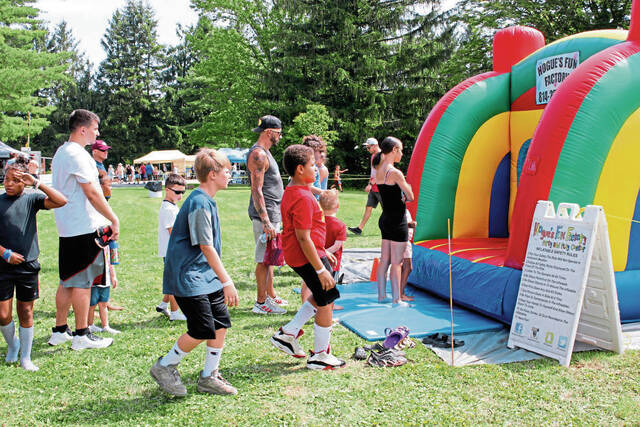Pheasant hunters aren’t just good at flushing out the birds they’re hunting. They’re pretty adept at figuring out where the Pennsylvania Game Commission is likely to stock them.
As Warden Zebulun Campbell and his crew pulled into a small parking lot near Loyalhanna Lake on Thursday morning, a half-dozen hunters in blaze orange were already waiting to greet them. Campbell said he pulled into a parking lot Wednesday to find more than 15 trucks full of pheasant hunters getting their dogs ready to head into the woods in search of newly released game birds.
“This is a pretty unique stocking we’re doing,” Campbell said as game commission staff began popping the doors on crates of mostly female ring-necked pheasants, part of a group of 8,400 being released this week across the state. “Usually our late-season stocking only happens right after Christmas and only in certain game lands.”
On this side of the state, pheasants are raised at the commission’s 120-acre game farm in Armstrong County. This year, the commission’s private supplier for pheasant chicks was asked to boost its numbers to hedge their bets in case they were hit with an avian flu outbreak.
“We requested our supplier to raise additional pheasants to be held through the fall and early winter as an ‘insurance policy’ against any disease issues that might arise,” said Ian Gregg, the commission’s wildlife operations division chief. “The primary breeder flocks remained healthy, and it’s not feasible for the ‘backup’ birds to also be held into the upcoming breeding season.”
That meant an extra opportunity for longtime pheasant hunters like Dave Sum, 67, of Apollo.
“I’ve been hunting pheasant since I was 12 years old,” Sum said. “The ideal conditions would be a little more snow. But I really enjoy the hunt, and flushing them out. Plus they’re good to eat.”
One of the male pheasants wasn’t in the mood to travel: He settled into a tree at the edge of the parking lot and wouldn’t budge even when Campbell was shaking his tree branch and poking him with a long-pole.
A hunter eventually climbed into the tree and brought down the bird by hand. It scampered into the nearby underbrush.
Without the commission’s stocking program, Pennsylvania wouldn’t have any pheasants. Their native range is central and eastern Asia, but it has been widely introduced in the U.S. as a game bird. An adult male weighs 2½ to 3½ pounds, an adult female weighs 2 pounds.
Campbell said Thursday’s release locations, both near Loyalhanna Lake, offer good access for hunters from across the region.
“It’s right off Route 22, and there’s a lot of hunters in Allegheny County with pheasant tags, and they can get out here pretty easily,” he said.
In total, more than 240,000 pheasants have been released into state game lands during the 2024-25 hunting season.
Gregg said this year’s “bonus” stocking will be evaluated to determine how to proceed in the future.
“This may or may not be repeated in future years, depending on 2025 results, annual evaluation of disease risks and agency budget constraints,” he said.
The pheasant hunting season runs through Feb. 28. For more information, see PGC.gov.





















